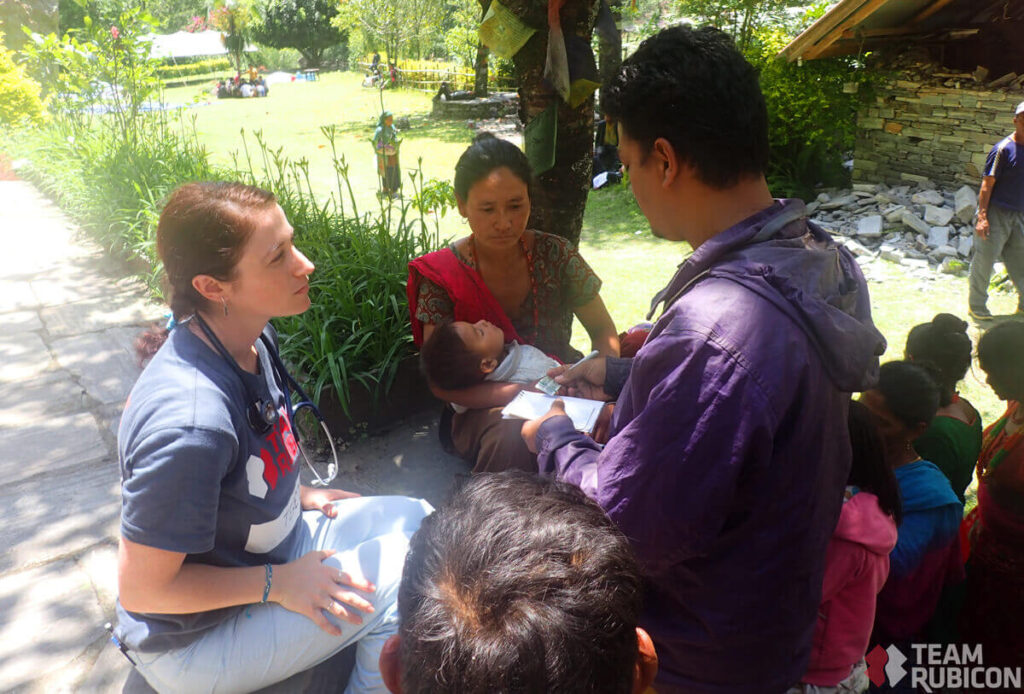“This is Mashal, he was crushed by bricks- he has pain to his head neck, and arm.”
“This is Netra, she was crushed by house too.”
“This baby, he has cough since earthquake, diarrhea, and not want to eat.”
Within 30 minutes of announcing the opening of our mobile clinic, an open field and a canvas tent in an empty resort three hours outside Kathmandu, there is a thick crowd pushing to be seen. We spend the morning caring for minor traumas, coughs, and headaches, and also addressing chronic illnesses, aches and pains, checking blood pressures, and distributing water purification drops and oral rehydration solution.
 While natural water sources remain, food is scarce, and displaced families are living in tents, tarps, and half-destroyed buildings, beginning to spread colds and diarrheal illnesses due to the close quarters. We quickly realize food and shelter are as critical as medical care and refocus on finding rice, lentils, and tarps to distribute.
While natural water sources remain, food is scarce, and displaced families are living in tents, tarps, and half-destroyed buildings, beginning to spread colds and diarrheal illnesses due to the close quarters. We quickly realize food and shelter are as critical as medical care and refocus on finding rice, lentils, and tarps to distribute.
We make instant best friends with all the children by handing out cookies and packets of noodles. We also begin to see more and more response teams setting up clinics in areas near the road, so we turn our attention to those areas that can’t be reached by vehicle.
Day three, we set out on an 8.5 mile hike to more remote villages, where there has been no access to medical care. I sit on the dirt floor of a half-collapsed school and run a clinic for three hours, seeing over 50 patients. Fortunately, most complaints are minor, requiring a dab of antibiotic ointment or a strip of ibuprofen. Headaches and coughs are rampant, likely due to the dust stirred up in the earthquake, and several of the children and elderly have developed pneumonias.
In the higher mountain villages, no homes were untouched, and everyone has a story of loss. I spend most of day providing reassurance and routine check-ups. We do home visits to the sicker patients, finding a broken ankle and forearm, and a traumatized 17-year-old with developmental delays who was trapped under a rock in her home. She hasn’t spoken since the earthquake and her family is worried she has internal injuries. The arm and leg are easy to splint and should heal well. The young girl has no physical injuries, but I have nothing to offer for her trauma.



